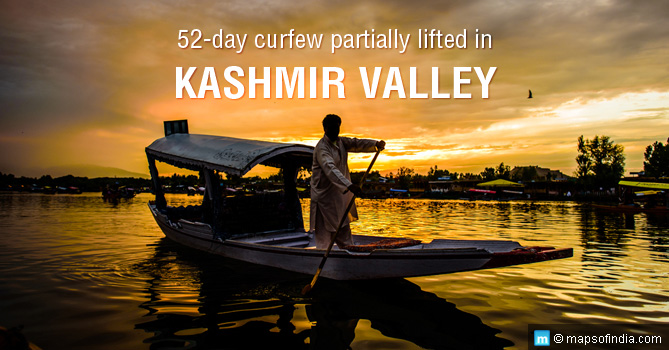52-day curfew was partially lifted in Kashmir valley, barring the still volatile town of Pampore in South Kashmir and some parts of Srinagar.
Is lifting of 52 day curfew in Kashmir really a blessing for locals? 52 Day Curfew Lifted in Kashmir Valley

